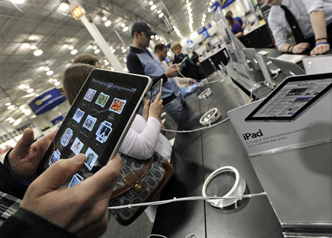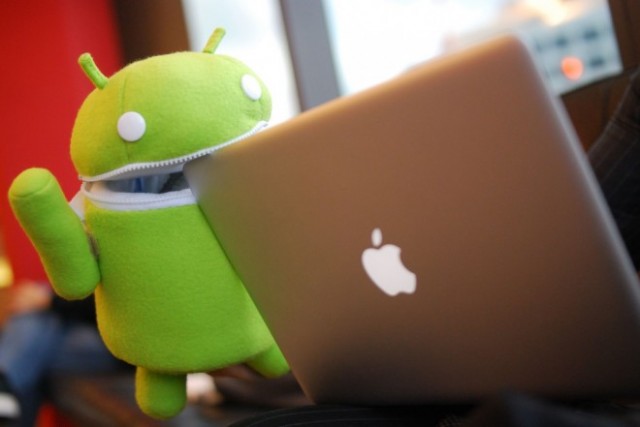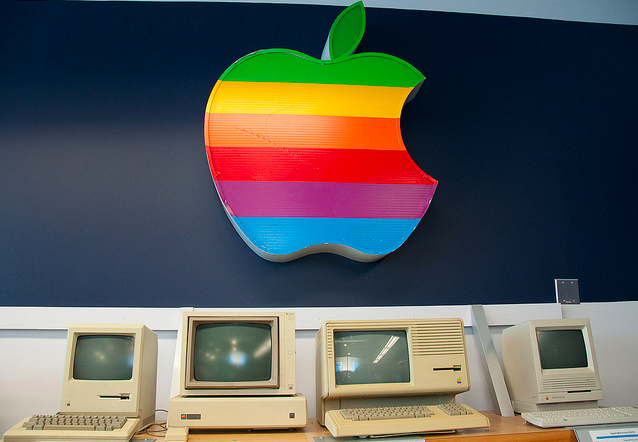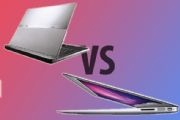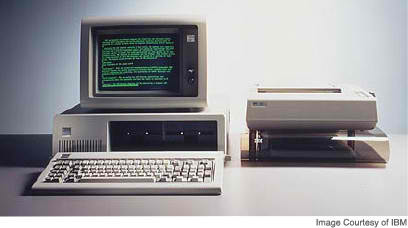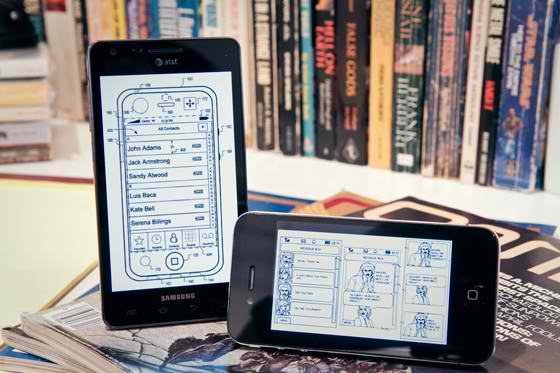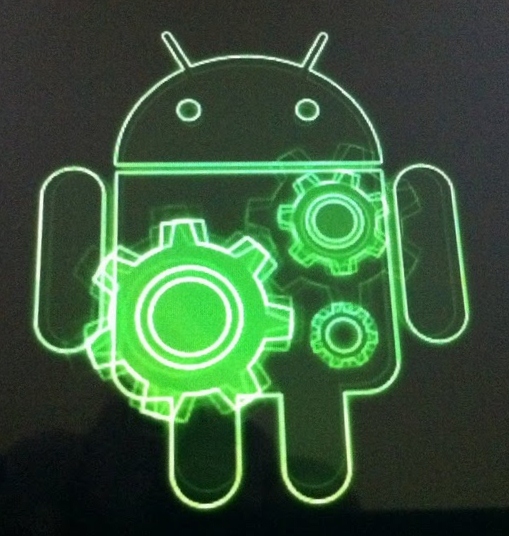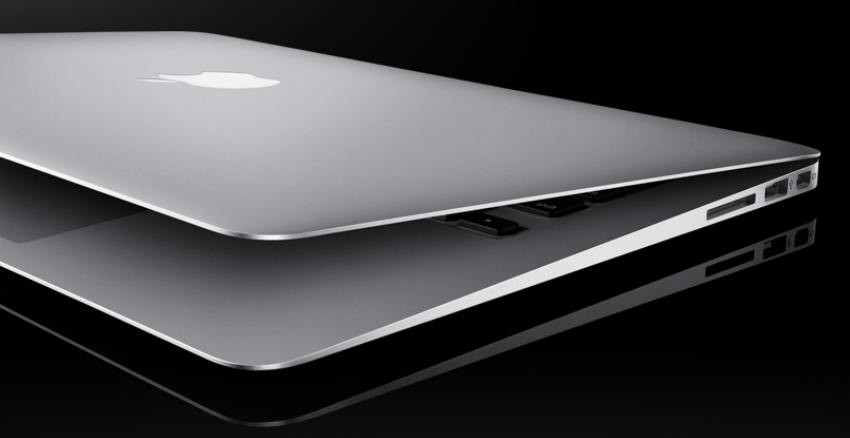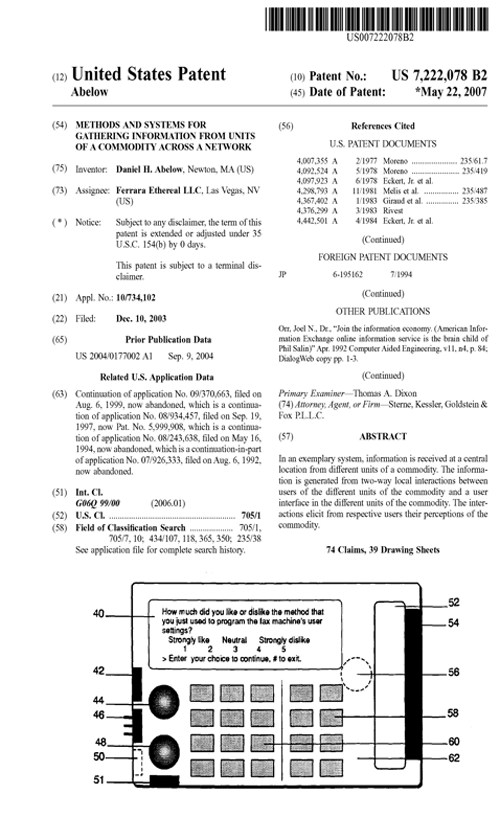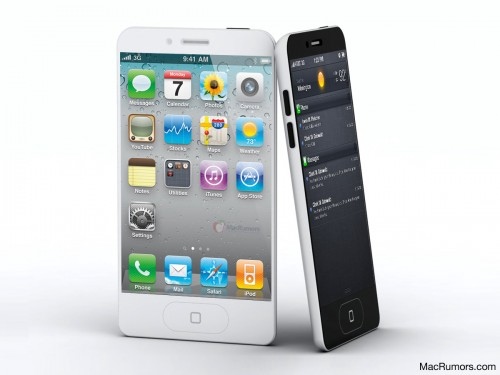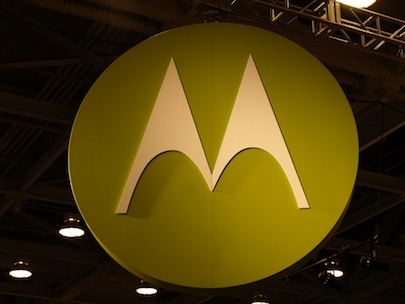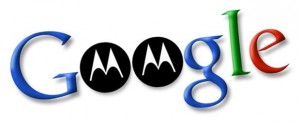VIA ZDNet – By James Kendrick
Month: August 2011
Google+Moto: “Like a Python That Swallowed a Minivan”
 Michael Mace, who knows more about mobile computing than just about anyone around, is deeply skeptical about Google’s purchase of Motorola Mobility. “Either Google’s worldview will dominate and ruin Motorola, or worse yet the Motorola worldview will infect Google,” he writes in an insightful post on his MobileOpportunity blog. “Google with Motorola inside it is like a python that swallowed a minivan.”
Michael Mace, who knows more about mobile computing than just about anyone around, is deeply skeptical about Google’s purchase of Motorola Mobility. “Either Google’s worldview will dominate and ruin Motorola, or worse yet the Motorola worldview will infect Google,” he writes in an insightful post on his MobileOpportunity blog. “Google with Motorola inside it is like a python that swallowed a minivan.”
Mace, now CEO of Cera Technologies, knows whereof he speaks, having held executive posts at Apple, Palm, and Palm’s ill-fated OS licensing spin-off, PalmSource.
One big problem he sees is Google’s lack of experience in hardware: “Speaking as someone who worked at PalmSource for its whole independent history, an OS company always believes that it could do a better job of making hardware than its licensees. It’s incredibly frustrating to have a vision for what people should do with your software, and then see them screw it up over and over. The temptation is to build some hardware yourself, just to show those idiots how to do it right. I think maybe Google just gave in to that temptation.”
The full post is well worth reading.
Google Concedes That Technology Isn’t Free
VIA Harvard Business Review Blog – By Ralph Eckardt
Amazon targets U.S. government with GovCloud
GigaOm’s Derrick Harris on a new cloud service for federal agencies.
Wonder Why All Those Android Press Releases Looked the Same?
Android Press Release (tip of the hat to Ed Bott)
Google’s Strategic Mistakes Drove Motorola Buy
VIA Harvard Business Review Blog – By Horace Deidu
Why Google’s Purchase Of Motorola Is A White Flag Of Surrender, And How Apple Won The Future of Tech
VIA Cult Of Mac – By John Brownlee
Why A Tablet is Key To Amazon’s Business
I was being interviewed by a journalist recently where the discussion was around the impending release of an Amazon Tablet. I enjoy helping journalists out with stories and I gladly accept interview requests because the discussion is always engaging and often helps sharpen my own thoughts on a subject.
This was the case again when I was asked why a tablet is important to Amazon’ business and business strategy. That is the question i’d like to address in this analysis.
A Tablet is Amazon’s Brick and Mortar
Here is an analogy: a tablet is to Amazon what a physical store is to Wal-Mart.
If you think about Amazon’s business, it started with selling books online and then quickly became a place where consumers can buy just about anything and shop competitively from one single location. It just so happens however that this location is not physical it resides fully within your browser. Amazon’s location is virtual.
To contrast, a company like Wal-Mart is evolving into the digital age with a strategy that includes their brick and mortar stores. To some degree Barnes and Noble is doing something similar but only in the realm of books. Amazon however has no intentions to create a physical location where you walk in to experience their service. I would argue however that Amazon is very interested in giving you a physical storefront and it started with the Kindle.
The Retail Experience Matters
I wrote an article on Why Apple Retail is Key to Their Competitive Advantage. In that article I highlight some key things about retail.
Any retailer will tell you how important the overall retail experience is to their success. Some companies do retail poorly and others do retail extremely well.
The Kindle for Amazon started completely around discovering, purchasing and reading books. The Kindle is the retail storefront to Amazon’s digital book library.
I believe that the evolution of the Kindle will follow Amazon’s business evolution. It started with books then included everything else. Which is why this next device that will most likely be a fully featured tablet will also come with Amazon’s complete shopping experience built in. This includes not just digital storefronts like books, music and movies but physical items as well. Since Amazon is one of, if not the largest digital storefront, it benefits them to get devices on the market where they control the shopping experience.
This is one of the reason’s I believe Amazon re-jiggered their iOS app strategy to stay away from Apple’s transaction model and fees. I don’t believe this move was just about avoiding fees but that Amazon wanted to control the user experience with their storefront instead of Apple. This is why previously with the Kindle app on iOS the Kindle store launched a web browser and took you out of Apple’s ecosystem and into Amazon’s.
Reflecting on that point briefly it becomes clear that Apple’s app store commerce model works for those for whom billing and storefronts are a problem but it does not work for those companies who have spent millions of dollars perfecting their own e-commerce experience.
Amazon also has an interesting strategy with their Prime service that could be strategically integrated as well with their tablet. Perhaps Amazon gives better deals or promotions to those who own the tablet thus incentivizing more purchasing from their store directly on the tablet.
This is why I believe a tablet is strategic for Amazon. Of course they can and will make sure their services are available on every device imagineable. However if they bring a device to market that is a full blown tablet but also includes the most elegant and seamless experience to research, discover and purchase from; then that device becomes the retail storefront to everything Amazon sells – and more.
Further Reading on Amazon:
How Amazon Could Own the Android Tablet Market
Updated: Motogoo: The Damage to Google’s Bottom Line
Update 8/16: The market seemed distinctly cooler to the Google-Motorola Mobility deal the day after, with shares falling 3.27% to 539. And Standard & Poor’s downgraded GOOG from “buy” to “sell” on concerns about the impact of the Motorola deal. Here’s Peter Kafka’s take at All Things D.
—————–
Whatever benefit the acquisition of Motorola Mobility brings Google in the long run, it definitely would wreak havoc on the company’s financials in the short term.
 For the year ended Dec. 10, 2010, Motorola Mobility (MMI) had gross revenues of $11,5 billion compared with $29.3 billion for Google. But MMI’s operating income was just $76 million or 0.7% of revenues, compared with $10.4 billion or 35.4% for Google. MMI ended the year with a net loss of $79 million, while Google has a net of $4.2 billion or 10.3%.
For the year ended Dec. 10, 2010, Motorola Mobility (MMI) had gross revenues of $11,5 billion compared with $29.3 billion for Google. But MMI’s operating income was just $76 million or 0.7% of revenues, compared with $10.4 billion or 35.4% for Google. MMI ended the year with a net loss of $79 million, while Google has a net of $4.2 billion or 10.3%.
During the crudest sort of combination–real pro forma financials for the combined company will be much more complicated–absorbing MMI would have knocked 11 points off Google’s gross margin and 4.3 points off its net.
Financial markets don’t seem overly concerned about this. Google shares fell 6.54 or 1.16% today in a generally up market. Despite the damage to the income statement, the acquisition will have minimal impact on Google’s balance sheet. The company won’t have to take on any debt to pay for the deal and MMI, which was spun off from Motorola only a year ago, would bring no significant debt to the marriage.
Of course, if Google continues on its recent growth path, the financial impact of the acquisition won’t last long. The real challenge will be melding two companies with vastly different cultures and histories.
Why Microsoft WILL Buy Nokia
In a recent post on Why Google had to buy Motorola, I pointed out that both Ben and I had predicted that this would happen because we were convinced that in order for a company to really be successful in tablets and smartphones they had to own the ecosystem of hardware, software and services.
Today’s announcement that Google would buy Motorola’s Mobility Solutions group underscores this thinking. As Google studied the ingredients of Apples success, it became obvious that Apple’s ownership of the OS and then its ability to fine-tune the hardware to deliver a seamless user experience was critical to consumer’s strong acceptance of the iPad and iPhone. Apple uses this ownership to drive amazing innovation.
This allows them to deliver the upcoming iCloud service so that it can synchronize content and data between all OS devices and utilizes the hardware in special ways. And it gives them a platform for future innovation. For example, what if the next version of the Nano has Bluetooth on it and can be used in a wristband/watch option. Since it is IOS based, it would have the new alert system that will be in IOS 5. That means that technically, if you get an alert on your iPhone in your pocket, that same alert shows up on your Nano watch. This is just one example of how Apple can continue to drive innovation at the hardware, software and services integration level. Knowing Apple I am sure they have dozens of these types of things in the works.
Google clearly went to school on this and while they claim that the patents were a key part of the reason they bought Motorola Mobility, the other reason is that they clearly know that by owning the hardware and software they can now drive the innovation of Android from both the hardware and software level and take more control of their future. And while they want others to keep licensing Android, they basically threw their partners under the bus in order to insure Androids long term success. I predict you will see Android defections or at the very least, companies hedging their bets by endorsing a third alternative by the end of Sept.
Now, don’t think that this same thinking has escaped Microsoft. They have to have come to the same conclusion. Microsoft clearly wants Windows Mobile Phone 7 to become a worldwide hit and at this moment, Nokia is just another distributor of Windows Phone 7 in the same way HTC and other are. But if they decide to keep this OS as a pure licensed property and trust the hardware partners to innovate on their own, that boat has sailed. They too will come to the conclusion that if they want Windows Mobile 7 to be the third major alternative to Apple’s IOS and Google’s Android, they will need to own the hardware as well as the software and services.
Of course, this goes completely against their 30 years of history of being a software licensing company. Actually, they have precedent in hardware with the XBOX. But the rules have changed when it comes to mobile and I believe that Google’s move to buy Motorola Mobility has now forced Microsoft’s hand.
I now believe that it is no longer a matter of “if” Microsoft will buy Nokia but instead a question of “when” they will do it to make sure that Windows Mobile 7 can compete against Apple and Google.
Google: Set Top Box King?
Largely overlooked in the initial reaction to Google’s proposed $12.5 billion purchase of Motorola Mobility is the deal’s potential impact on the cable set top box business. When Motorola split the company in two, the decidedly un-mobile set top box group (formerly General Instrument) went to the Mobility unit. The U.S. market for set top boxes for cable and cable-like services, such as Verizon’s FiOS, is split between Motorola and Cisco (the former Atlanta Scientific.)
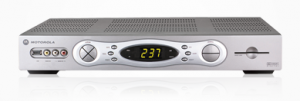 The cable box has been a huge impediment to the development of really practical systems to get internet video onto living room TVs. Motorola and Cisco build the boxes their cable provider customers want and that means very limited integration with the internet. In the view of the cable companies, Facebook and Twitter are fine, but Netflix and Hulu most certainly are not. And while it is possible to build a CableCARD-equipped device that allows customers to receive both cable and internet TV on a third-party box, resistance by the cable companies and the failure of the Federal Communications commission to enforce its own rules has resulted in a minuscule market for these products.
The cable box has been a huge impediment to the development of really practical systems to get internet video onto living room TVs. Motorola and Cisco build the boxes their cable provider customers want and that means very limited integration with the internet. In the view of the cable companies, Facebook and Twitter are fine, but Netflix and Hulu most certainly are not. And while it is possible to build a CableCARD-equipped device that allows customers to receive both cable and internet TV on a third-party box, resistance by the cable companies and the failure of the Federal Communications commission to enforce its own rules has resulted in a minuscule market for these products.
Google TV is a great example of a product that was choked by the set top box monopoly. The closest Google could come to integrating cable into its supposedly comprehensive service was to use a ridiculous and antiquated device called an IR blaster to let the Google TV unit control the set top box. IR blaster-based products have been around for years, but have never won favor from consumers (for one thing, at least in my house, the little IR sending units keep falling off the cable box.)
So what would Google do with its new presence in the living room if this deal goes through. It could simply follow the Motorola course and go on making the set top boxes that cable operators want, but that seems profoundly un-Googley. Or it could strike a new course, offering the first mass-market home entertainment united that fully integrate cable and internet services. That could revolutionize the business–or drive all the cable operators to Cisco, which has never shown much inclination to rock this particular boat. My bet is that Google will at least try to build the product that Google TV should have been in the first place.
Why Google had to buy Motorola
At the end of the year, when I made my predictions for the New Year, I stated that I believed Google would buy Motorola Mobile. And last week, Ben wrote here in Tech.Pinions about why he thought Google should buy Motorola. We had no inside information on this. But as we have studied how a complete eco system of hardware, software and services are critical to the success of a company bringing out tablets and smart phones, it became pretty clear to us last year that Google, at some point, was going to have to buy a hand set maker if they really wanted to control their destiny and the destiny of Android.
With today’s acquisition of Motorola Mobility group by Google, Google has now closed the loop on building out and controlling an entire eco system of hardware, software and services. With it they can now drive Android in the direction they see fit and innovate in all three areas. Like Apple, they now own the hardware, software and services and can become an even greater force in the future of mobile products.
In his comments on the acquisition, Google CEO Larry Page stated that part of the reason they did the deal was to also gain access to Motorola’s patent pool.
This could have an impact on the suit against Motorola as a starter.
And depending on the patents, it could also help them in the multitude of legal suit against Android out there as well, although it is not clear how much Motorola Mobile has that would related directly to these other Android suits.
But as important as this is for Google and Motorola, it is highly problematic for Google’s partners. Now HTC, Samsung and other licensees will be competing directly with Google/Motorola. And this leaves a lot of big questions on the table. For example, Google uses a lead partner with major new versions of Android. We assume it will now always be Motorola? If so, how does that affect the other licensees?
And, although they claim Android will continue to be open, just how much of an inside position will Motorola Mobility have over the competitors? I have already fielded multiple calls from clients who license Android who are, how do I put this, “concerned” about this news.
I believe that the major fall out from this is that there is now room for a third mobile OS to come out that would give vendors a broad solution they can use without having to compete with Google/Motorola. If I were Microsoft I would be touting Windows Mobile as an alternative.
However, here is a more interesting suggestion. If I were HP and Todd Bradley, I would immediately license the Palm Web OS as an alterative. This is by far the best Mobile OS besides Apple’s IOS on the market and it could become of great interest to Android licensees who feel threatened by this move by Google.
There are still a lot of other questions about this deal, like how will they deal with two distinct cultures and who drives the future of Android given Motorola’s greater experience in mobile then Google has?
But no matter how this turns out, we will mark today as the day that the mobile world changed forever as Google has begun to rewrite their history again.
Further Reading:
Why Microsoft WILL Buy Nokia
Also Read:
6 Ways Apple Has Influenced the Last 30 years of the PC Industry
On Aug 12th, the industry celebrated the birthday of the IBM PC and its impact on our world of information. But we would be remiss if we did not also point out some of the key technologies Apple brought to the PC industry and how some of their pioneering technology and decisions actually pushed the PC industry towards stronger growth.

The first technology was the Mac and its graphical user interface. When the Mac was introduced in January of 1984, the IBM PC had been out for three years already, and its UI was still text based. But Apple shook up the computing establishment by introducing the Mac with its GUI, mouse and voice feedback and forever changed the man-machine interface for good.
The second major thing they did is toss out the 5 ¼ inch floppy disk and move to what quickly became the next major storage medium for PC’s. Jobs and company decided that the Mac should have a 3 ½ inch disk. At the time, the computing establishment smirked at Apple’s bold move, but soon after realized that this smaller disk size allowed them to create smaller PC’s and by 1986 this smaller floppy became the mainstream industry standard.
Their third major decision was to introduce a Postscript laser printer at an affordable price. This was a huge industry breakthrough. Most laser printers at the time cost well over $50,000 and took up a large space in an office. Not only did Apple bring this laser printer in at a price under $10,000, but also their laser printer actually sat on a desktop. Then, they were smart enough to link Aldus’ Pagemaker to the Mac and this laser printer and desktop publishing was born. From a historical perspective, you cannot underestimate how much this desktop publishing solution has impacted the world of publishing, graphics and even movies.
The fourth major thing they did was introduce Mac’s with CD Rom drives. Again, this was a revolutionary move at the time and in fact, this ushered in the era of multimedia computing. I had the privilege of being a part of the first multimedia roundtable held at UCLA in 1990 that was co-sponsored by Apple and saw first hand the potential that a CD ROM would have on computing by allowing a PC, for the first time, to deliver a storage device that could integrate text, images, audio and video into a storytelling medium. Again, the traditional PC vendors smirked at Apple’s move and said it was just another unneeded expense. But within two years they got the message and started to integrate them into mainstream PC’s as well. And, with the CD rom in PC’s, for the first time, the PC garnered serious attention from mainstream consumers. If you know your PC history you know that it was multimedia computers that finally got the PC into homes and the consumer PC market was born as a direct result of the role the CD ROM played in bringing multimedia content to the PC experience.
The fifth major influence on the traditional PC market came with the introduction of Apple’s colored Mac’s not long after Steve Jobs came back to run Apple in 1997. In fact, this major move to make industrial design a cornerstone of all Apple Macs has, over the last decade, forced the PC industry to completely rethink what a PC should look like and again, it took Apple to lead the way and help them see the future of the PC.
And now they have introduced the iPad. While Jobs likes to say that this is product of the post PC era, I beg to differ with him on one point. If you open up an iPad, it has a motherboard, CPU, memory, IO’s, screens, etc. In my world, that is a PC. And in that sense, Jobs and team again is influencing the PC market in an even more dramatic fashion.
While over the 30 years of the IBM PC, Apple did not achieve the type of market share of the HP’s, Dells, Acer’s etc. And during much of this time, the company actually struggled to remain relevant. But nobody can deny their impact during this period and now, it is the Dells, HP’s et all who are all chasing Apple.
Check Out The New Tech.pinions Recommended Reading Section
We have added a new featured section to the homepage called Recommended Reading. In this section we will link to other opinion pieces that we think are essential reads.
Clicking on the the title of the article will take you directly to the original article. We hope that this section can become a quality curated source of the key opinion pieces of the day about the technology industry.
So where do you look on the homepage for our new Recommended Reading section? Take a look at the image below and you will see a snapshot of our whole site and the pink arrow points to the new section.
Be sure to check back daily for all our recommended reads from around the web.
Windows Laptop Makers Can’t Catch Up to the MacBook Air
VIA PC World -By James Cross
A highly recommended read. I completely agree that matching the cost and quality of the Air is going to be the biggest challenge of UltraBook makers.
Celebrating the IBM PC’s 30th Birthday
I joined Creative Strategies the year that the IBM PC was introduced. In those days Business International owned Creative Strategies and IBM was one of their major clients. Business International is a WW global econometric consulting firm and IBM used them often to help them open new IBM offices around the world. And Creative Strategies was their technology-consulting arm so we were often drawn into these types of projects to help on technology related issues.
A side note to this is that the first time I had to visit the Business International Offices in NYC, not far from the UN, I met a black intern who was working there during the summer while he was in law school. I did not know it at the time, but the intern was Barack Obama who, as you know, has gone on to become the most powerful man in the world.
But I joined Creative Strategies at a most interesting and fortuitous time in my career as well as history. In those days, the world of computing was dominated by mainframes and mini-computers and at the time, that was the focus of Creative Strategies research and consulting. But with the introduction of the Apple II and release of the IBM PC in 1981, the company had decided to add PC’s to their research focus. And although I was working in the company’s marketing group at the time, with my background in semiconductors, I was asked to lead their first PC analysis group and in a sense and by default, became Creative Strategies first PC analyst.
And in a wonderful quirk of fate, my first outside project was with IBM’s PC group. Not long after the PC was launched IBM asked us to help them with their retail and consumer strategy. As a result, I got to work with Don Estridge’s team as they charted their future strategy for the IBM PC and got to see the evolution of the IBM PC from the inside.
Now, 30 years later, all of the people who were part of those early days of the PC and have watched the impact of the PC on business, education and consumers are marveling at the impact this product has had. It has changed the way we work, learn and play and has democratized information. And while we are entering the Post PC era, it is important to remember that the PC is not going away. It will continue to be an important tool in business and education and be at the heart of productivity based computing. In fact, we will continue to sell around 400 million PC’s a year for at least the next 5-7 years and while it may not be as sexy as tablets and smartphones, it will continue to be the workhorse for serious productivity.
For me, the PC has been at the center of my personal and business life for three decades now and I can’t imagine what life would be like without it. It has helped shape and define my career as well serve as an important tool for my own personal productivity, education and entertainment. And it has provided the livelihood and fortunes for millions of people who are involved with the PC industry and continues to be an important source for innovation in the Internet age.
There have been some wonderful retrospectives on the PC written by many colleagues and I list some of the one’s worth sharing below..
From Mashable- IBM PC History
From PC Magazine- a timeline- PC History Timeline
Tech icons reflect on the 30th anniversary of the PC
The Patent System isn’t Broken We Are
VIA This is My Next – By Nilay Patel
Why I Already Miss Physical Media
VIA Time.com – By Harry McCracken
Tech Icon’s Reflect on PC’s 30th Anniversary
VIA PC Mag – By PC Mag Staff
Android is Finally Ready for the Tablet Market
Over the last few weeks, Android for Tablets (aka Honeycomb) 3.2 started rolling out to tablets like the Asus Transformer and the Motorola Xoom. While the announcement of Android 3.1 was met with great fanfare at Google I/O 2011, Android 3.2 didn’t receive a lot of attention as it started actually rolling out to systems. Ironically, I believe that with the rollout of Android 3.2, the operating system is finally ready for tablet prime-time.
Background
Android 3.X, aka “Honeycomb”, is Google’s operating system for tablets. It was first shown at CES 2011 and the first product it rolled out on was the Motorola Xoom. After its launch, the firestorm ensued and Honeycomb was viewed as having significant issues:
- Sluggish performance even while having superior hardware specs.
- Lack of stability and reliability as evidenced through repeated application crashes.
- Lack of apps. Even as of July 1, 2011, NY Times David Pogue reported that at the most, 232 apps were optimized for Honeycomb. The iPad had 90,000 optimized apps. To make matters worse, Android phone apps ran in a tiny window.
- Lack of external SD card support. Just do a few Google searches on “SD card” and “Xoom” and you will know what I am talking about.
- Limited USB connectivity. Keyboards, mice, digital cameras, card readers either didn’t work at all or were very inconsistent.
Needless to say, this didn’t exactly equate to a very good experience, as I have personally experienced on three separate 10” Android Honeycomb tablets.
Improved Performance, Stability and Reliability
Between Android 3.0 and 3.2, my Honeycomb experience is like night and day. Single-tasking responsiveness is close to the iPad 2, although the iPad 2 is still faster. Honeycomb does outperform iPad 2 on multitasking though.
When I use a tablet, I use it as a primary device. I load around 20-30 apps, and I do set up the background tasks and widgets as they are differentiated features versus the iPad. Where I previously experienced between 10-20 application crashes a day, with Android 3.2, I may get one a day. This is a huge breakthrough. And yes, I do get application crashes on the iPad 2. iPad 2 crashes are less pronounced and “hidden” as the app just dies and you are taken to the home screen. In Android, a dialogue box pops up on the screen and you are given the choice to wait, kill, or report the crash.
Improved Application Support
Android 3.2 added the capability for users to better tap into the library of approximately 300-400K applications. Applications come in three forms that are somewhat transparent to the user:
- Tablet optimized apps: Resolution, layout, fonts, content are optimized for the tablet.
- Stretched phone apps: Phone applications are stretched to tablet dimensions keeping phone layout, fonts, and content. In some apps this is automatic; in others it requires the user to toggle a menu icon in the apps bar.
- Zoomed phone apps: Fixed-size phone applications are zoomed in like the iPad phone apps. In some apps this is automatic; in others it requires the user to toggle a menu icon in the apps bar.
If a user runs across a a manually scaled-app, they are given the option to stretch or zoom. Many of the apps, though, were automatic and stretched properly into place.
Here is how some of the top Android phone apps look on Android Honeycomb 3.2 tablet.
As you can see, some of the phone apps look really good and others could be improved. The net-net is that Android Honeycomb tablet buyers just got 300K-400K more apps to run on their tablets.
Conclusion
Like the first Android phone OS, the Android tablet OS has quickly undergone a massive overhaul and improvement in a mere 6 months. The most recent improvements in Android Honeycomb 3.2 were virtually unnoticed by many in the press, but ironically, the update improved the experience to the point that Android is finally ready for prime-time.
So does a massively improved experience guarantee success? Of course not. Android still has to deal with its IP challenges, fragmentation, spotty paid video services, and some “me-too” hardware designs, BUT, if you don’t first have a responsive, reliable experience with lots of apps, you have nothing. And Android finally has that for tablets.
Have your say in the comments section below.
The 13″ MacBook Air is the Perfect Notebook
I have used a lot of notebooks in my 11 years as an industry analyst of consumer technology products. In fact I have used nearly every type of design, form factor, performance, and screen size imagenable across notebooks and desktops. Because of that I am convinced that the 13″ MacBook Air is the perfect blend of everything required to be a great computer.
Prior to using the 13″ MacBook Air I used a 15″ MacBook Pro. In conjuction with that Notebook I also used last year’s 11″ MacBook Air. The primary reason for this was I wanted a notebook that was more travel friendly but I also wanted one with enough performance to handle the media processing I do.
After using the latest 13″ Air I have found it to be the perfect blend of portability and performance.
Hardware/Design/Portability/Performance
In my office I have a 27″ monitor that I hook my notebook up to when I am at my desk, making screen size when “docked” somewhat irrelevant. However, I move around a good deal as a part of my job. Whether it’s commuting to clients’ offices all around the Bay Area or traveling the country or the world my notebook is in my bag a lot. Because of that I used to travel with the 11″ Air.
Although extremely portable, arguably the most portable and powerful sub 12″ notebook, I still found the screen size a hinderence to long term use. It certainly sufficed in a lot of ways but I found myself desiring a slightly larger screen often.
The 13″ is the ideal size allowing for a larger screen experience without sacrificing portability.
I also found last years 11″ slightly underpowered when it came to the media processing that I do. I make a lot of HD videos of family and events and such so I need a certain level of performance or I will go insane. Apple says the new models are 2.5 times faster, but the 13″ model is faster still, and surpassed my expectations in handling video and audio processing.
The backlit keyboards are certainly nice but not all that necessary for me. The internal SD card reader is another feature the 13″ has over the 11″ that has been a very nice to have.
At the end of the day, the 11″ is “under-screened” for my needs and the 15″ Pro is just slightly to large for me to travel with comfortably. Fitting right in the middle, the 13″ Air is perfect.
Battery Life
Lastly i’ve been extremely impressed with the battery life of the MacBook Air line. Throughout the last year using the 11″ Air I was constantly shocked how long the battery would go. Especially with what I will consider general use.
It seemed as though I could shut the computer and leave it for a week then pick it up and nearly no battery had drained. I attribute most of this to a true state of “sleep” due to the solid state hard drive. It’s very similar to the iPad experience.
I don’t like to do battery benchmarks because there are so many usage variables. All I can say on the matter is that I can use it for a full day on a single charge. Granted this includes opening and closing my computer as I bounce around for meetings. I’m not sitting stationary working all day on a single charge.
In my opinion all that matters when it comes to battery life is that when you are mobile and not able to plug in you have enough battery to work. In that regard the 13″ Air delivers.
I’ll say it again. The 13″ MacBook Air is the Perfect Notebook.
Time for a Smartphone Patent Pool
Most of the creative energy in the smartphone industry seems to be going into lawsuits, with just about everyone claiming that everyone else is violating their patents. In addition to keeping a lot of lawyers in work, the disputes are having real world consequences, with, for example, Apple blocking the sale of Samsung Galaxy Tab 10.1 in the European Union. It’s time to stop the madness, but any solution is going to have to come from the industry itself, not from Congress or the courts.
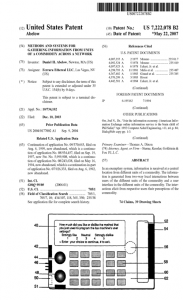 If you are seriously interested in the issue, however, stop right now and read “The patent system isn’t broken, we are,” Nilay Patel’s detailed and incisive analysis of the issues surrounding software patents. In addition to analyzing where we are and how we got here, Patel offers some helpful suggestions for reform.
If you are seriously interested in the issue, however, stop right now and read “The patent system isn’t broken, we are,” Nilay Patel’s detailed and incisive analysis of the issues surrounding software patents. In addition to analyzing where we are and how we got here, Patel offers some helpful suggestions for reform.
The problem is that serious changes in the patent system require legislation, a tall order from a Congress that would probably have to break a filibuster to pass a Mother’s Day resolution. (a useful but relatively minor reform bill may pass this fall, but it does not address the fundamental issues.) Courts can impose some sanity, but they are slow moving and constrained by existing legislation.
It seems to me that the best way out of the smartphone mess would be for all the the folks now beating each other up in court and before the International Trade Commission to get together and form a patent pool. Everyone owning relevant patents contributes their intellectual property. Members and others wishing to use the patents pay a reasonable fee for a license and the proceeds are divided among the contributors.
This is hardly a novel idea. Philips and Sony, which each owned key technology behind the compact disk, set up a patent pool that helped launch the enormous success of the CD format. Six companies that owned key DVD technology (later joined by three others) created the DVD6C Licensing Group. The numerous patents behind MPEG video compression technology are pooled into MPEG LA, which licenses their use.
A pooling of smartphone patents would make life a lot simpler for everyone in the business. There are so many patents covering so many aspects of the hardware and software that it appears to be all but impossible to build a phone that doesn’t infringe on something. And right now, it looks like the big long-term winners will be the lawyers. In theory, the issues could be resolved by a series of pair-by-pair patent cross-licensing agreements, but a single patent pool seems simpler and more efficient.
Not that creating such a pool is going to be simple. First, any arrangement would probably need the blessing of U.S. and European antitrust regulators, who tend to see such cooperation as potential collusion. The other pools I referred to were easier because they were created at the onset, before an industry existed to be divvied up. A tremendously difficult issue would be determining how to share the license fees among the contributors, a problem that would probably call for a complex arbitration. The position of Google, a major smartphone player with a relatively puny patent portfolio is particularly difficult, although in fairness, Google also stands to be the big loser if the industry proceeds down its present litigious path.
A key step any patent pool would have to take to be successful is to indemnify its licensees against attacks by non-member patent holders. In effect, the pool would have to say: “A license from us gives you access to all the intellectual property needed to build a modern smartphone. If a third party claims otherwise, we will defend you.” This sort of insurance can be expensive, but certainly within the means of a pool that included Apple, Microsoft, HP, Samsung, and other giants.
One serious concern is that the existence of a pool could cripple innovation. If inventors have to share their creations with competitors. will they have any incentive to innovate? One solution would be to limit the pool to current patents–often the most troublesome because their existence and extent is unknown–and leave companies free to claim exclusive rights to future inventions. That might set up more problems for the future, but could still deal with the difficulties of today.
How Important is the Design of the iPhone 5 to its Success?
I continue to watch with amusement the various pictures and speculative drawings for the iPhone 5. And the rumor mills are working over time trying to figure out what the iPhone 5 might look like. In fact, the folks at MacRumors have one of the best mock up drawings I have seen on the rumored iPhone 5 and, at the very least, it is cool to see what an iPhone 5 might possibly look like.
But how important is the new design really to the iPhone 5’s success? Yes, it could have a bigger screen and maybe even be a bit slimmer, but I contend that the iPhone momentum is already so strong that no matter what Apple does with the design of the iPhone 5, it will be a monster hit and could sell as many as 30 million in the holiday quarter. (Apple sold 20 million iPhones in the last quarter.) In fact, our research shows huge pent up demand from both ATT and Verizon customers in the US and very strong demand for this new phone around the world.
I know that the design of the iPhone itself will make the most news when it is launched but there is an even more important technology that needs to be factored into the iPhones future success. To understand this technology, let me relate to you something that happened when the first iPhone came out.
When the iPhone was launched, I had a briefing from the top executives at Apple responsible for the iPhone. After they showed me its design and specs, they did something very pointed and telling. They laid the iPhone on the table and asked me what I saw. I knew this was a trick question and I could have answered it a lot of different ways. But what I said is that I saw a device with a blank screen on it. They affirmed my answer and went on to say that this is what they want people to see. Although they were very proud of the iPhone design, they told me that by itself and when not turned on, it is just a dumb device. However, when you turn it on and the OS and apps get fired up, that is when the iPhone becomes an iPhone.
From the beginning, Apple built into the iPhone’s success equation an ecosystem of hardware, software, applications and services that together make it the iPhone. Yes, the design of the phone is important. But when turned off, it is not very smart. On the other hand, when it is turned on and the screen lights up, that is when the magic takes place. The hardware is only 1/3rd of the iPhones success equation. And while Apple may tweak the design of the iPhone on a yearly basis and add things like more memory, better communications features, better camera, etc, I would argue that what they do with iOS is much more important to the iPhone’s overall success and increased world wide demand. It is what you can do with the iPhone that matters.
So while you might be hyperventilating about the potential features and design of the iPhone 5, keep in mind that the iPhone itself is only part of the iPhone’s success equation. I believe that what Apple does in the next version of IOS and future versions of their mobile OS is actually much more important to the continued growth and success of the iPhone. It is the software that will determine the real future of this important Apple product.
Identities May be Collateral Damage in AntiSec Data Dump
 A couple thousand people could be at high risk for identity theft as a result of a large dump of documents snatched from law enforcement agency web sites by a group calling itself AntiSec. The Aug. 6 data release, latest in a series by what appears to be a loosely linked collection of–take your pick–activists or vandals, was justified as retaliation for the arrests of a number of members of the Anonymous collective.
A couple thousand people could be at high risk for identity theft as a result of a large dump of documents snatched from law enforcement agency web sites by a group calling itself AntiSec. The Aug. 6 data release, latest in a series by what appears to be a loosely linked collection of–take your pick–activists or vandals, was justified as retaliation for the arrests of a number of members of the Anonymous collective.
IdentityFinder, which makes software designed to flag personally identifiable information in email messages and a variety of document formats, scanned the data dump (AntiSec claimed it contained more than 10 gigabytes of data.) The check found over 100,000 unencrypted files containing personal data, Included were:
- 1,923 unique Social Security numbers
- 4,661 unique passwords
- 15,738 unique dates of birth
- 17,105 unique phone numbers
This information, along with an assortment of other data, could be used to cause considerable grief for individuals named in the files. “This is collateral damage,” says Identity Finder CEO Todd Feinman. “AntiSec didn’t care about the consequences, but they weren’t going after ID theft.”
The incident onces again serves as a warning–as if any further alerts were needed–that sensitive personally identifiable information should never be stored in unencrypted files accessible from the internet. And as an additional warning to anyone who might feel like poking around in the next set of data to be dumped, Feinman also said that many of the files released by AntiSec contained malware, presumably Because the source files were infected.
Why Google Should Buy Motorola
Article Disclaimer: This is all theory and purely speculative. This is simply a thought exercise.
Motorola has been an interesting company to watch over the past 10 years. They have been a driving force in bringing the cellular industry into fruition and recently Motorola spun out their mobile business and created Motorola Mobility. I find an intruiguing scenario to play out to be one where Google buys Motorola Mobility.
One particular reason this is interetsing is because Motorola Mobility is deeply committed to Android. In fact as of now it appears that the company is solely basing its future on Android. Recent reports indicate an interest in Windows Phone 7 and possibly 8 by Motorola but it doesn’t appear actual product plans exist.
Motorola’s challenge is that they are attempting something that is becoming increasingly difficult in the industry today, namely to make money on hardware alone. To make matters even more challenging they have decided to bet their future on a company who is less interested in helping companies make money on hardware and more interested in free.
In fact I am convinced that Google and the Android team in particular would prefer that Android handsets cost less rather than more.
All of that leads to the first major reason I think Google would benefit greatly from buying Motorola Mobility.
Google Could Practically Give The Hardware Away
Google has already demonstrated an interesting model regarding Chrome that basically presents a hardware as a service model. In this model Google is offering Chrome OS hardware to the business and IT community for $28 a month and to educational institutions for $20 a month. There we have it, a hardware as a service model and Google is already going down this path.
So why not consider this same approach with Android handsets? This is not feasible currently because a company like Motorola needs to make money on the hardware since they don’t get to participate on the services financial upside like a carrier and Google. However if Google bought Motorola they could sell the hardware at a loss and make it up with their backend services.
A strategy very similar to what we think Amazon intends to do with their tablet.
Google needs as many Android devices on the market as possible. And yes they aren’t faring to poorly currently but if they subsidized the cost of the handset with their own longer term services revenue, which Google could do, I believe the market would accelerate even faster. Making the point again, Google cares about the services revenue not the hardware revenue. It behooves them to seed as much of the market with Android devices as possible.
Imagine if you could get one of the latest Android smart phones fully featured for less than $99. The price barrier to high end smart phones would be gone and Google would have even more demand for Android.
The second major reason is patents.
Google Needs Patents
Patent lawsuit frenzy is sweeping the technology industry. The media, analysts, pundits and more have now made it glaringly clear that Google is on the weaker end of the spectrum when it comes to patents.
It is for this reason they attempted to purchase the Nortel patents. Based on recent actions it can be concluded that Google knows they need to secure a more robust patent portfolio. More specifically they need a patent portfolio around mobile devices to help protect Android.
Motorola has an incredibly robust patent portfolio. In fact they have nearly three times as many patents as Nortel. Some have alluded that Motorola’s patent portfolio is possibly the strongest in the mobile field. It could be debated but its possible that Motorola has the best patent defense against Apple’s in this field.
One interesting point from Morgan Stanley analyst Ehud Gelblum who wrote in a research note last month:
“It is interesting to note that Motorola asserted 18 patents against Apple, and sued Apple first, whereas Apple has asserted just six patents against Motorola.”
Scott Moritz from the street remarks:
“Not only does Motorola have far more patents than its nearest competitors, it appears to have more of the key patents that may help the Android camp in a battle against Apple.”
The Big Picture
Although this is interesting to think about I doubt it will happen. A result of Google buying Motorola would be that their other partners like HTC, Samsung, LG and more would become competitors. I doubt Google’s partners would appreciate that and could potentially dump Android in the process. Also as far as I know Motorola Mobility is not for sale.
This patent issue however is a real one and one that if not dealt with tactfully by Google and the Android partners could prove fatal.
What’s more likely to happen, which The Street article points out, is that those in the Android camp band more closely together and leverage each others patent portfolios to protect Android.
Motorola however needs to continue to post solid financial results as they did for the most part last quarter. As I stated earlier making money on hardware alone is going to prove very difficult but Moto can and should continue to invest in innovations that differentiate their hardware allowing them a chance to profit from hardware. It would be wise of them to get more into the services game but not much is being shown there yet.
